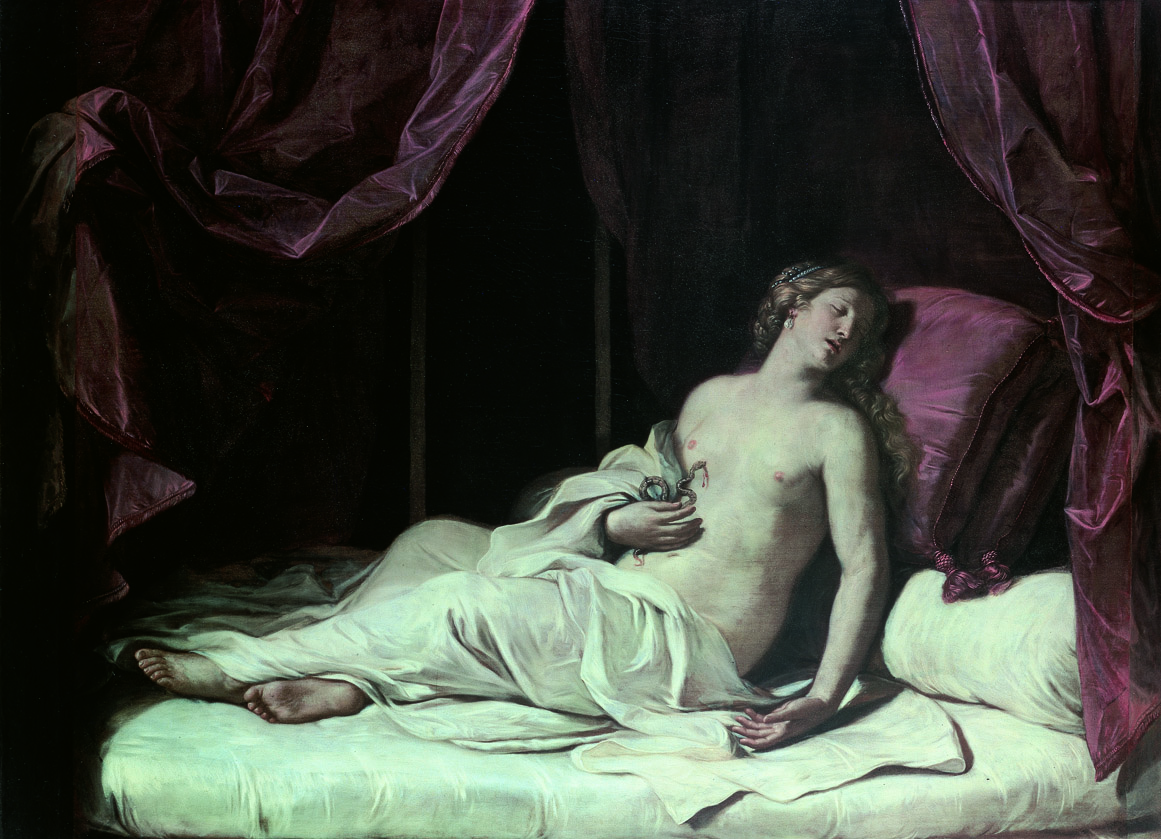
Click here to view image
Cleopatra dying
Brignole-Sale De Ferrari Maria 1874 Genova - donazione
ambito emiliano
Barbieri, Giovanni Francesco detto il Guercino
painting
1648 - 1648 - XVII
PR 16
Unità di misura: cm; Altezza: 173; Larghezza: 237
olio su tela
Il Guercino (Giovanni Francesco Barbieri, 1591-1666) - Bologna - 1968<br>Genova e Guercino. Dipinti e disegni delle civiche collezioni - Genova - 1992<br>El siglo de los genoveses e una lunga storia di arte e splendore nel palazzo dei dogi - Genova - 1999/2000<br>Guercino tra Sacro e Profano - Piacenza - 2017
This painting, in which Cleopatra is depicted in the act of taking her life, in order not to suffer the shame of defeat and imprisonment. The painting was executed by the master in the last phase of his activity, when he had moved to Bologna following the death of Guido Reni (1642), when he inherited the role of head of the school and underwent its influence, moving towards a classicist style, aimed at a greater idealization of the figures accompanied by a progressive reduction of the chromatic range and the frequent use of pastel colours. The canvas is a fine example of this renewed stylistic direction, skilfully playing in only two tones: the white of the sheets and the complexion of Cleopatra and the purple of the cushions, the curtains of the alcove, arranged in a “wall”, as though in a theatrical performance, and the ruby-coloured blood drops that flow from the breast of the queen, who, by now near lifeless, lies languidly on the couch. The painting is identifiable as that mentioned in Guercino’s account books as "painting of Cleopatra" paid 125 ducats "March 24, 1648 by the most illustrious Mons. Carlo Emanuele Durazzi", cousin of Stefano Durazzo. He, as was tradition for many Genoese cardinals, held the position of cardinal for the Emilia region, which was subject to the Papal State. This link - if the legate was not Genoese, then the vicelegate probably was - explains the great wealth of seventeenth century Emilian painting in the collections of the Ligurian city. By the mid-eighteenth century, through various hereditary passages, the painting passed from the Durazzo family into the collection of Gio. Francesco II Brignole - Sale, who placed it in the picture gallery on the second noble floor of Palazzo Rosso. The modalities of the transfer of ownership from the heirs of Carlo Emanuele II Durazzo, for whom the work was executed, to the picture gallery of Gio. Francesco II Brignole-Sale at Palazzo Rosso, where it appeared as early as the 1756 catalog, have not yet been clarified. Careful restoration in 1991 restored the work to its highly refined yet limited color scheme. Drawings in relation to this painting are noteworthy: the one interrogatively attributed to Guercino preserved in Besancon (inv. N. D. 2266), in pen and ink, shows the queen lying on her side, her head resting on the left and in the right-hand side-with greater respect for the literary source-the asp: if it is to be referred to the work at Palazzo Rosso, it is an early study. More interesting are the other two sheets, the one from the P. E n de Boer collection in Amsterdam, in pen and ink, and the one from a private U.S. collection. In the Dutch drawing, the bust of Cleopatra in particular appears to be defined, while it does not seem that the artist intended to depict her completely lying down. This detail is, however, evident in the American drawing, where the tasseled pillow and curtains also appear. The painting depicts Cleopatra dying on a bed while being bitten by a snake.




